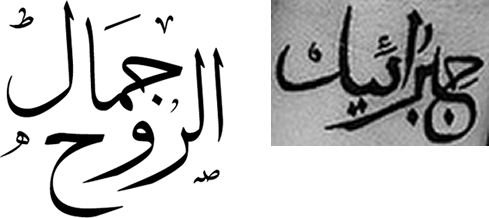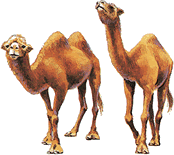These images was sent in by a visitor to Omniglot who would like to know what they mean.

Can you help?
In an interesting book I read recently, What Language Is by John McWhorter, the author discusses why some languages appear a lot more complicated or ‘ingrown’ than others. He gives the example of Persian and Pashto, two Iranian languages spoken in a number of countries in western and central Asia. Whereas Persian has more or less regular and simple verb conjugations, in Pashto the verb endings and other aspects of the language are much less regular. This is because Persian was the language of a large empire in which many people learned Persian as adults, and few did so perfectly, so many of the irregularities and other complex aspects of Old Persian were regularised and simplified. This process didn’t happen with Pashto, so the language is still ingrown.
Other languages that are or have been used as colonial languages or lingua francas with many adults learning them imperfectly have undergone a similar process of simplification. These include English, Mandarin Chinese, colloquial spoken varieties of Arabic, Indonesian and Swahili. According to McWhorter, these languages could be considered abnormal as many of their irregularities and eccentricities have been levelled out. As a result they are relatively easy to learn, or at least somewhat less difficult than more ingrown languages.
One example a particularly ingrown language is Navajo, which even linguists find superlatively forbidding. Some even claim that it’s not possible to learn it after childhood. Apparently none of the Navajo verbs follow a regular pattern, and regularity is notably absent in other parts of the language.
So if you’re struggling to get to grips with Spanish or Mandarin, it might be of comfort to you to remember that you’re not learning Navajo or a similarly ingrown language.
This sentence in Judeo-Arabic was sent in by a visitor to Omniglot who would like to know what it means.
האדא כלאמהום. אלדי יגאוובון עלא האדה מסלכהום. ומא ענדנא גוואב נגרח להאדא גוואבהום
Can you help?
I put it into Google translate and got this transliteration: Hada Achlamhum. Baldi Igaauubon Ala Shahada Msllachhum. Ma Endana Agovab Ngerah Lhada Agovabhum.

There’s a popular myth that each Arabic word can denote itself, its opposite, and a kind of camel. Another version of this is that “Every Arabic word has a basic meaning, a second meaning which is the exact opposite of the first, a third meaning which refers to either a camel or horse, and a fourth meaning that is so obscene that you’ll have to look it up for yourself.” [source].
One possible example of this is rass (رأس ?), which apparently means to eat a lot, to eat a little, and a camel with especially hairy ears*.
I haven’t been able to find this word in any online dictionaries – does anybody know if it actually exists? Are there any other examples of words like this?
[*From: The Secret Life of Words – How English Became English by Henry Hitchings]
Here are some recordings of people for a number of different countries speaking Arabic. Can you work out where they’re from and what types of Arabic they’re speaking?